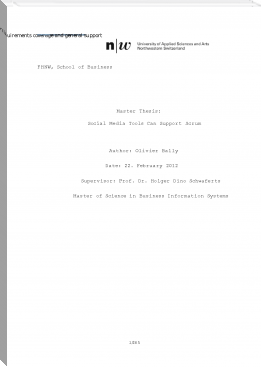The History of Apple Inc. by by : Malak Mansour (electronic reader TXT) 📕

Read free book «The History of Apple Inc. by by : Malak Mansour (electronic reader TXT) 📕» - read online or download for free at americanlibrarybooks.com
- Author: by : Malak Mansour
Read book online «The History of Apple Inc. by by : Malak Mansour (electronic reader TXT) 📕». Author - by : Malak Mansour
1976-1981
Steven Wozniak and Steven Jobs had been friends in high school. They had both been interested in electronics, and both had been perceived as outsiders. They kept in touch after graduation, and both ended up dropping out of school and getting jobs working for companies in Silicon Valley. (Woz for Hewlett-Packard, Jobs for Atari)
Wozniak had been dabbling in computer-design for some time when, in 1976, he designed what would become the Apple I. Jobs, who had an eye for the future, insisted that he and Wozniak try to sell the machine, and on April 1, 1976, Apple Computer was born.
Hobbyists did not take the Apple I very seriously, and Apple did not begin to take off until 1977, when theApple II debuted at a local computer trade show. The first personal computer to come in a plastic case and include color graphics, the Apple II was an impressive machine. Orders for Apple machines were multiplied by several times after its introduction. And with the introduction in early '78 of the Apple Disk II, the most inexpensive, easy to use floppy drive ever (at the time), Apple sales further increased.
With the increase in sales, however, came an increase in company size, and by 1980, when the Apple III was released, Apple had several thousand employees, and was beginning to sell computers abroad. Apple had taken on a number of more experienced mid-level managers and, more importantly, several new investors, who opted to take seats on the board of directors. Older, more conservative men, the new directors made sure that Apple became a "real company," much to the dismay of many of its original employees.
In 1981, things got a bit more difficult. A saturated market made it more difficult to sell computers, and in February. Apple was forced to lay off 40 employees. Wozniak was injured in a plane crash. He took a leave of absence and returned only briefly. Jobs became chairman of Apple computer in March.
CH.21981-1983
Following the historic visit to Xerox PARC in 1979, Jobs and several other engineers began to develop the Lisa, which would redefine personal computing. Jobs, however, proved to be a poor project manager, and was taken off the Lisa by Mike Markkula, then president of Apple, and one of the major stockholders. Jobs, who owned only 11% of Apple, decided to take over someone else's project, and began working with the Macintosh--which had started as a $500 personal computer. Jobs made sure it was much more.
In 1981, IBM released its first PC. With the power of Big Blue behind it, the PC quickly began to dominate the playing field. Jobs' team would have to work very quickly if they hoped to compete with IBM in the personal computer market. Jobs began to realize that Apple would have to become a "grown-up" company, and realized he was not the man for the job.
In early 1983, Jobs began to court John Sculley, then president of Pepsi-Cola. In April, he was successful, and Sculley became president and CEO of Apple. Jobs believed Sculley would help Apple "grow up," but had no idea how right he would turn out to be. Eventually, it cost him his job.
CH.3
1983-1985
Although a successful businessman, it soon became clear that Sculley did not know much about the computer industry. He and Jobs were at odds almost immediately. As the announcement of the Macintosh drew closer, Jobs went into hyperdrive. He worked hard to get developers to write programs for the upcoming machine--Jobs had realized that the Mac would ultimately be made or broken by the software industry.
On January 22nd, 1984, during the third quarter of the Super Bowl, Apple aired its infamous 60 second commercial (13.4 MB) introducing the Macintosh. Directed by Ridley Scott, the Orwellian scene depicted the IBM world being shattered by a new machine. Initially, the Mac sold very well, but by Christmas of 1984, people were becoming fed up with its small amount of RAM, and lack of hard drive connectivity.
t was around the beginning of 1985 that Jobs and Sculley began to argue. Sculley believed Jobs was dangerous and out of control; Jobs believed that Sculley knew nothing about the computer industry, and was making a poor effort to learn. In May of 1985 Jobs decided to make a play for control of the company. He enticed Sculley to schedule a meeting in China, and planned to stage a boardroom coup while Sculley was gone. At the last minute someone leaked the information to Sculley, and he decided to confront Jobs. After a heated argument between the two, the board took a vote, and sided unanimously with Sculley. Jobs resigned that day, leaving Sculley as the head of Apple.
CH.41983-1985
Although a successful businessman, it soon became clear that Sculley did not know much about the computer industry. He and Jobs were at odds almost immediately. As the announcement of the Macintosh drew closer, Jobs went into hyperdrive. He worked hard to get developers to write programs for the upcoming machine--Jobs had realized that the Mac would ultimately be made or broken by the software industry.
On January 22nd, 1984, during the third quarter of the Super Bowl, Apple aired its infamous 60 second commercial (13.4 MB) introducing the Macintosh. Directed by Ridley Scott, the Orwellian scene depicted the IBM world being shattered by a new machine. Initially, the Mac sold very well, but by Christmas of 1984, people were becoming fed up with its small amount of RAM, and lack of hard drive connectivity.
It was around the beginning of 1985 that Jobs and Sculley began to argue. Sculley believed Jobs was dangerous and out of control; Jobs believed that Sculley knew nothing about the computer industry, and was making a poor effort to learn. In May of 1985 Jobs decided to make a play for control of the company. He enticed Sculley to schedule a meeting in China, and planned to stage a boardroom coup while Sculley was gone. At the last minute someone leaked the information to Sculley, and he decided to confront Jobs. After a heated argument between the two, the board took a vote, and sided unanimously with Sculley. Jobs resigned that day, leaving Sculley as the head of Apple.
CH.51985-1993
Sculley became the de facto head of Apple in May 1985. Over the next few months, Apple was forced to lay off a fifth of its work force, some 1,200 employees. The company also posted its first quarterly loss. All this, and the resignation of Jobs, served to erode confidence in Sculley's abilities as CEO of Apple.
At the same time, Sculley became locked in a battle with Microsoft's Bill Gates over the introduction of Windows 1.0, which had many similarities to the Mac GUI. Gates finally agreed to sign a statement to the effect that Microsoft would not use Mac technology in Windows 1.0--it said nothing of future versions of Windows, and Gates' lawyers made sure it was airtight. Apple had effectively lost exclusive rights to its interface design. This would prove to be an important document in future lawsuits between Apple and Microsoft, involving the Windows interface.
What brought Mac out of the hole were the twin introductions of the LaserWriter, the first affordable PostScript laser printer for the Mac, and PageMaker, one of the first Desktop Publishing programs ever. These two in tandem made the Mac an ideal solution for inexpensive publishing, and the Mac became an overnight success, again.
In 1987, Apple introduced the Mac II. Built with expandablity in mind, the Mac II made the Macintosh line a viable, powerful family of computers. Apple was a "Wall Street darling" again, (Rolling Stone) shipping 50,000 Macs a month. It seemed in 1989 that Windows would be a flop, and the Mac would be riding high for the next decade.
It didn't. By 1990 the market was saturated with PC-clones of every conceivable configuration, and Apple was the only company selling Macs. In late May, Microsoft rolled out Windows 3.0, which could run on virtually all of the PC-clones in the world. Apple was in trouble.
Apple's top idea for a solution was to license the Mac OS. While many believed it would erode the quality of the Mac, or that it would create even more competition, it was becoming clear that Apple could not provide both the hardware and the software to drive an industry. There was also talk of porting the OS to run on Intel-based machines.
It was Michael Spindler, Apple's new COO, who nixed the idea, saying that it was "too late to license."
n late 1991, Apple released its first generation of PowerBooks, which were an instant success. Work was being done on a new





Comments (0)